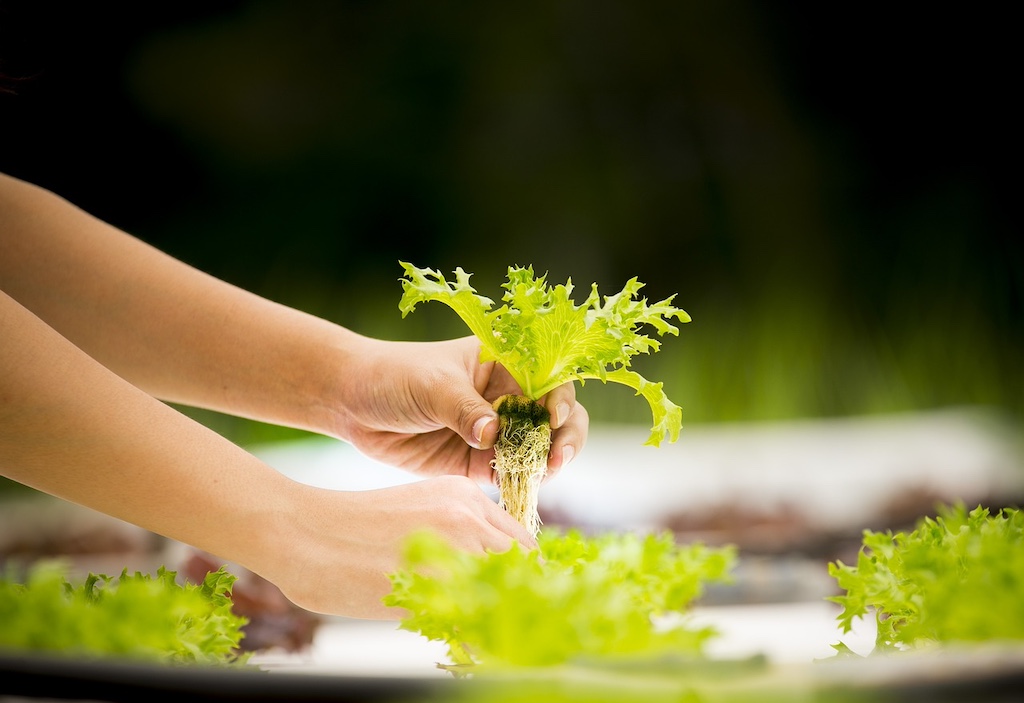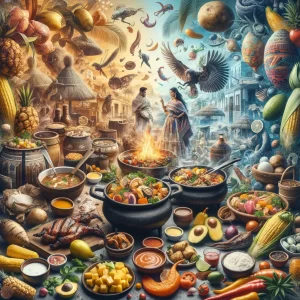Ancient grains are experiencing a significant resurgence, providing numerous nutritional, environmental, and sustainability advantages.
These resilient crops not only nourish the human body but also promote healthier agricultural practices.
This discussion will explore the role of ancient grains in sustainable farming, the challenges they encounter, and the innovative techniques that are shaping their future.
Additionally, it will cover various ancient grain varieties such as spelt, quinoa, and farro, while highlighting ways to support their cultivation and enjoy their distinct flavors and health benefits.
The Benefits of Ancient Grains
.jpg_00.jpeg)
Ancient grains, including quinoa, spelt, and farro, represent a significant source of nutritional value and provide numerous advantages that enhance food security, support sustainable agricultural practices, and promote biodiversity. These heritage crops are integral to sustainable food production and contribute to the preservation of cultural heritage within our food systems.
These heirloom varieties have demonstrated resilience over time, thriving in diverse ecosystems while substantially contributing to soil health through regenerative farming methods. By integrating permaculture principles and agroecological practices, ancient grains enhance soil fertility and promote sustainable development.
By incorporating ancient grains into dietary practices, individuals can not only enjoy their rich flavors but also support sustainable food systems that emphasize crop diversity, nutritional sustainability, and resilient farming.
These grains play a critical role in improving nutritional density and fostering ecological balance, aligning with contemporary sustainable practices and enhancing food sovereignty.
Nutritional Benefits
Ancient grains such as quinoa and teff are esteemed for their exceptional nutritional value, providing essential nutrients that contribute to a balanced diet and support food sovereignty.
These grains serve not only as a source of carbohydrates but are also rich in protein, fiber, vitamins, and minerals, rendering them a vital component of a nutrient-dense diet. Quinoa is particularly recognized for being a complete protein, as it contains all nine essential amino acids. Teff, on the other hand, is notable for its high iron and calcium content, which aids in the promotion of strong bones and the prevention of anemia. The nutritional diversity of these grains supports sustainable diets and contributes to food sovereignty.
By incorporating these grains into daily meals, individuals can enhance food sovereignty, fostering self-sufficiency and advocating for sustainable agricultural practices. The cultivation of such grains supports local communities by preserving traditional farming methods, strengthening nutritional resilience, and promoting sustainable livelihoods.
Environmental Benefits
The cultivation of ancient grains plays a significant role in supporting biodiversity and positively contributing to sustainable agriculture by reducing the ecological footprint, enhancing carbon sequestration, and promoting agro-biodiversity.
These resilient crops, which have thrived for centuries, provide essential genetic diversity that can improve resilience against pests and diseases, thereby decreasing reliance on chemical inputs.
By integrating ancient grains into agricultural systems, farmers can implement practices such as crop rotation and diversification, which are fundamental principles of climate-smart agriculture. This approach not only fosters a healthier soil ecosystem but also promotes sustainable land management practices that align with the objectives of reducing greenhouse gas emissions and ensuring environmental sustainability.
In summary, the reintroduction of ancient grains into contemporary agriculture represents a critical strategy for promoting ecological balance, enhancing environmental resilience, and ensuring the sustainability of the planet’s vital resources for future generations.
Sustainability Benefits
Ancient grains play a crucial role in promoting sustainability through practices such as crop rotation and soil conservation, which enhance soil fertility and support regenerative agriculture. These sustainable practices also contribute to sustainable crop management and the promotion of biodiversity conservation.
By incorporating these unique crops into contemporary farming systems, farmers can significantly contribute to greater biodiversity, which is essential for the establishment of resilient ecosystems. Employing agroecological principles not only aids in effective pest management but also enhances crop resilience to climate variability and supports sustainable harvesting techniques.
Moreover, supporting community-backed agriculture initiatives enables local farmers to share their harvests, fostering a connection between consumers and the sources of their food, thereby encouraging sustainable practices and contributing to local biodiversity.
The cultivation of ancient grains represents a pathway to innovative farming strategies that address environmental challenges while providing nutritious produce for communities. These strategies include holistic management and eco-friendly practices that ensure sustainable development and community resilience.
The Role of Ancient Grains in Sustainable Agriculture
Ancient grains are gaining recognition for their significant contribution to sustainable agriculture, with heirloom varieties such as spelt and einkorn playing a crucial role in promoting crop diversity, supporting sustainable land practices, and enhancing agroecological systems.
How Do Ancient Grains Help Promote Sustainable Agriculture?
Ancient grains contribute significantly to sustainable agriculture by promoting diverse crop rotation, which enhances soil health and preserves biodiversity within farming ecosystems.
These grains, often exhibiting greater resilience than conventional varieties, can thrive under various environmental conditions, making them an excellent option for intercropping systems. By cultivating ancient grains in conjunction with legumes or other crops, farmers can optimize nutrient cycling and minimize reliance on chemical fertilizers.
The implementation of regenerative practices, such as cover cropping and agroforestry, not only fosters a healthier ecosystem but also enhances water retention in the soil. Consequently, practitioners of sustainable farming can cultivate a more robust and productive landscape, aligning their methods with the principles of environmental stewardship and organic farming.
What Are the Challenges of Growing Ancient Grains?
Despite their advantages, the cultivation of ancient grains presents several challenges, including limited market demand and the requirement for specific agricultural practices that may be difficult for smallholder farmers to implement. These challenges highlight the need for sustainable supply chains and agricultural policies that support economic viability and traditional knowledge sharing.
These obstacles can discourage farmers from transitioning from conventional to ancient grain varieties, ultimately impeding their widespread cultivation. Concerns regarding the economic viability of producing these grains often arise, particularly related to profitability and consistent access to markets.
Many farmers may encounter difficulties in identifying buyers willing to pay premium prices, which can hinder the growth of this agricultural segment.
Innovative strategies, such as community-supported agriculture and collaborations with local chefs or health-oriented retailers, may help to address these challenges. These strategies promote food justice, seed saving, and sustainable livelihoods within local ecosystems.
Furthermore, the application of technology in crop management and the establishment of educational programs could enable farmers, enhancing their ability to cultivate and market ancient grains effectively. These efforts support agricultural innovation and the development of sustainable food production systems.
The Future of Ancient Grains in Agriculture
.jpg_01.jpeg)
The future of ancient grains in agriculture appears promising, particularly in light of the growing interest in farming innovations, adaptation to climate change, and sustainable yield practices that emphasize resilience, agro-industrial systems, and agro-biodiversity.
New Technologies and Techniques for Growing Ancient Grains
Innovative technologies and techniques, such as precision farming and regenerative farming practices, are significantly advancing the cultivation of ancient grains in alignment with sustainable practices. These advancements include the use of organic seeds and plant breeding to enhance drought resistance and agricultural sustainability.
These methods utilize data analytics and soil management systems to optimize water usage and nutrient delivery, effectively addressing the specific growth requirements of ancient grains such as quinoa, farro, and spelt. The integration of bioengineering has also resulted in the development of drought-resistant seed varieties, allowing farmers to cultivate these crops under less-than-optimal conditions.
Along with these advancements, practices such as cover cropping and diverse crop rotation contribute to improved soil health, reduced erosion, and enhanced biodiversity on agricultural lands. Together, these innovative approaches not only increase crop yields but also promote a more resilient agricultural system that honors the balance of nature.
The Potential for Ancient Grains to Feed a Growing Population
With the global population expected to reach 9 billion by 2050, the potential of ancient grains to improve food production and security through sustainable diets has become increasingly important.
These traditional cereals, such as quinoa, teff, and amaranth, possess unique nutritional profiles and demonstrate resilience to changing climatic conditions. By enhancing the cultivation of these crops, communities can provide not only a diverse and nutrient-rich food supply but also strengthen their overall food sovereignty and cultural heritage.
Ancient grains are often better suited to extreme environmental conditions and require fewer resources compared to modern staple crops, thereby offering a viable solution to current food security challenges and promoting sustainable harvesting practices.
Promoting crop diversity by incorporating ancient grains into agricultural systems enhances ecosystem health, supports local economies, and reduces the risks associated with monoculture practices. This approach aligns with sustainable agriculture and environmental impact reduction efforts.
How Can Consumers Support the Growth of Ancient Grains?
Consumers can play a crucial role in fostering the growth of ancient grains by engaging in local food initiatives and opting for sustainable sourcing methods that support community farming. By prioritizing food preservation and zero waste agriculture, consumers can contribute to heritage food systems and sustainable harvesting practices.
By actively seeking out farmers’ markets, individuals can establish connections with growers who are committed to cultivating these nutrient-dense cereals. Participating in community-supported agriculture (CSA) programs enables them to receive fresh, seasonal produce while providing direct support to local farmers who focus on ancient grain varieties. These actions support sustainable livelihoods, enhance community resilience, and promote food justice.
Advocating for sustainable agricultural practices raises awareness about the significance of preserving biodiversity. This advocacy includes encouraging institutions and local businesses to incorporate ancient grains into their menus and product offerings, thereby stimulating demand. Initiatives like crop rotation and the promotion of heirloom varieties further sustain soil health and enhance crop yield, contributing to climate resilience and food security.
Each small action taken contributes to a broader movement that can revitalize ancient grain cultivation and promote healthier food systems. Embracing sustainable practices and regenerative farming methods ensures the preservation of cultural heritage and supports agroecological practices, fostering local farming and ecosystem services.
Ancient Grain Varieties and Their Uses
Ancient grain varieties, including amaranth, millet, and buckwheat, provide a diverse range of applications, extending beyond culinary uses to deliver substantial nutritional benefits to consumers. These grains are integral to sustainable food production and contribute to agro-biodiversity and nutrient density, benefiting both modern agriculture and traditional farming.
Spelt
Spelt, an ancient grain recognized for its nutty flavor and high nutritional value, is extensively utilized across various culinary applications, including bread and pasta. Its cultivation often involves organic farming and sustainable crop management, enhancing soil fertility and supporting agricultural sustainability.
This versatile grain possesses a rich nutrient profile, serving as an excellent source of protein, fiber, and essential vitamins, thereby making it an outstanding choice for individuals seeking to enhance their dietary intake.
Incorporating spelt into meals not only supports a balanced nutritional regimen but also aligns with sustainable eating practices, as this grain is often cultivated with a reduced environmental impact compared to modern wheat varieties.
Both professional chefs and home cooks value spelt for its capacity to impart depth to dishes, making it a preferred ingredient not only in traditional baking but also in salads, soups, and as a base for innovative grain bowls.
Kamut
Kamut, often recognized for its rich flavor and numerous health benefits, is a highly regarded ancient grain utilized in various baking and cooking applications, and is abundant in essential nutrients. This grain exemplifies resilience farming and contributes to environmental impact reduction, playing a role in sustainable land use and food sovereignty.
This nutritious grain not only features a distinctive nutty flavor but also serves as an excellent source of protein, fiber, and essential minerals such as selenium and magnesium. The versatility of Kamut enables its incorporation into an extensive array of recipes, ranging from hearty soups and salads to artisanal breads and pastas.
Furthermore, utilizing Kamut aligns with sustainable farming practices, as it generally requires fewer resources and exhibits greater resilience against pests compared to contemporary wheat varieties. As an increasing number of individuals pursue healthier and environmentally responsible diets, the inclusion of Kamut presents a flavorful and nutritious option.
Einkorn
.jpg_10.jpeg)
Einkorn is an ancient grain recognized for its distinctive nutritional advantages, including a lower gluten content, which makes it a suitable choice for individuals with gluten sensitivities. Its cultivation embraces heritage agriculture and sustainable development, contributing to environmental resilience and climate-smart agriculture.
Along with being easier to digest, einkorn features a robust profile of essential nutrients, including protein, fiber, and various vitamins and minerals, many of which are often diminished in more heavily processed grains.
Historically, einkorn was among the first cultivated forms of wheat, with origins tracing back thousands of years, and it has significantly contributed to the diets of our ancestors. Its resurgence in contemporary culinary practices is noteworthy, as it can be incorporated into a diverse array of dishes—ranging from wholesome bread and pasta to delectable baked goods—enabling both professional chefs and home cooks to appreciate its nutty flavor and unique cooking properties while reaping its health benefits.
Farro
Farro, an ancient grain with a rich historical significance, is renowned for its health benefits and versatility in culinary applications, particularly in salads and grain bowls. Its role in sustainable diets and community resilience highlights the importance of traditional knowledge and the conservation of heritage food systems.
This nutritious whole grain can be seamlessly integrated into a variety of recipes, making it a preferred choice among health-conscious individuals and culinary professionals alike. Rich in protein, fiber, and essential minerals, farro not only promotes digestive health but also helps stabilize blood sugar levels, rendering it an excellent option for balanced meals.
Its robust texture pairs well with a diverse array of flavors, facilitating innovative combinations with vegetables, proteins, and sauces. Furthermore, by incorporating farro into meal planning, individuals can contribute to sustainable food systems, given that this crop requires less water and is frequently cultivated with fewer pesticides than more conventional grains.
Amaranth
Amaranth is a highly nutritious ancient grain that is rich in protein and is naturally gluten-free, making it a valuable addition to a diverse diet. This grain supports agroforestry and embodies eco-friendly practices, contributing to sustainable supply chains and environmental stewardship.
This exceptional grain is also abundant in essential vitamins and minerals, including iron, magnesium, and phosphorus, which contribute to overall health and well-being. Furthermore, amaranth is characterized by its high fiber content, which aids in digestion and promotes a sense of fullness, making it an excellent choice for individuals seeking to maintain a balanced weight.
Both professional chefs and home cooks frequently incorporate amaranth into a variety of dishes, ranging from salads to baked goods, demonstrating its versatility in gluten-free culinary applications.
As more individuals pursue sustainable dietary choices, the increasing popularity of ancient grains such as amaranth becomes apparent, as it supports both nutritional requirements and environmental awareness while offering a unique and earthy flavor to meals.
Teff
Teff, an ancient grain native to Ethiopia, is highly regarded for its nutritional value and is predominantly utilized in the preparation of traditional dishes such as injera. Its cultivation practices align with zero waste agriculture and holistic management, enhancing local biodiversity and community-supported agriculture.
This versatile grain possesses a comprehensive nutritional profile, rich in essential nutrients, including protein, fiber, and a variety of vitamins and minerals. Both professional chefs and home cooks have adopted teff due to its gluten-free properties, making it an excellent alternative for individuals with dietary restrictions.
As a revered ancient superfood, teff has been integrated into contemporary culinary practices, serving not only as a base for flatbreads but also in the preparation of pancakes, porridge, and various baked goods. Its nutty flavor and fine texture enable it to enhance a wide range of dishes, both savory and sweet, thereby improving their nutritional value while providing an enjoyable taste experience.
Millet
Millet is a versatile ancient grain that is abundant in dietary fiber and can be incorporated into a wide range of culinary applications, from savory dishes to desserts. The grain’s role in sustainable land practices and ecological farming supports climate adaptation and food preservation, addressing food justice and nutrient-rich foods production.
This resilient grain not only promotes digestive health but also aids in the regulation of blood sugar levels, making it an excellent choice for individuals seeking health-conscious dietary options.
Its flexibility in the kitchen encourages experimentation with a variety of recipes, including salads, porridges, and baked goods. Additionally, millet plays a vital role in sustainable agriculture due to its ability to thrive in harsh climates and its low water requirements, thereby contributing to food security and biodiversity.
By integrating millet into their diets, individuals can enhance their overall well-being while also supporting environmentally sustainable farming practices.
Sorghum
Sorghum is a gluten-free ancient grain that offers a multitude of health benefits, rendering it a favored choice in various dietary regimens and culinary applications. Its contribution to environmental resilience and sustainable agriculture education highlights the importance of permaculture principles and plant breeding in modern food production systems.
Rich in fiber, protein, and essential vitamins, sorghum serves as an excellent option for individuals aiming to enhance their nutritional intake without compromising on flavor. Its versatility allows for incorporation into a wide array of dishes, ranging from hearty salads and soups to baked goods and breakfast cereals.
As a whole grain, sorghum promotes digestive health and supports weight management, making it particularly appealing to health-conscious consumers. Its naturally nutty flavor and chewy texture enable it to excel in both sweet and savory recipes, establishing it as an outstanding ingredient for those interested in harnessing the benefits of ancient grains in their culinary endeavors.
Quinoa
Quinoa, often regarded as a superfood, is an ancient grain recognized for its status as a complete protein and is widely utilized in salads, bowls, and baked goods. Its sustainable harvesting techniques and support for sustainable livelihoods ensure its prominence in eco-friendly practices and seed saving traditions.
This versatile ingredient serves as a source of essential amino acids and is rich in fiber, magnesium, and antioxidants, making it an excellent choice for individuals seeking to enhance their nutritional intake.
Incorporating quinoa into meals contributes to heart health, aids digestion, and may assist in regulating blood sugar levels. Its distinct nutty flavor and fluffy texture enable it to integrate seamlessly into a variety of dishes, ranging from savory to sweet, thus making it a valuable addition to diverse culinary creations.
Selecting quinoa as a dietary staple can also promote sustainable food systems, as it is drought-resistant and requires fewer resources for cultivation compared to many traditional crops.
Buckwheat
.jpg_11.jpeg)
Buckwheat is an ancient grain recognized for its numerous health benefits, including being gluten-free and rich in antioxidants, which positions it as a nutritious option for a variety of dishes. The grain’s contribution to climate change adaptation and soil regeneration supports ancient agricultural practices and the promotion of food heritage.
This versatile ingredient is distinguished by its unique, nutty flavor and exceptional nutritional profile, offering essential amino acids, fiber, and significant minerals such as manganese and magnesium.
Consequently, buckwheat can be seamlessly integrated into a range of culinary creations, including pancakes, salads, and hearty soups, accommodating diverse dietary preferences.
Incorporating buckwheat into meals promotes a sustainable approach to eating, in alignment with contemporary dietary trends that emphasize plant-based sources.
Its adaptability in the kitchen is widely appreciated, enabling individuals to enjoy nourishing and flavorful foods while supporting both their health and environmental sustainability. This reflects the principles of sustainable diets and food systems, emphasizing nutrient-rich foods and eco-friendly practices.
Frequently Asked Questions
What are ancient grain varieties and how are they being used in sustainable agriculture and regenerative farming?
Ancient grain varieties are grains that have been cultivated and used for thousands of years. They are being used in sustainable agriculture and regenerative farming because they are more resilient to pests and diseases, require less water and fertilizer, and have a higher nutritional value compared to modern grain varieties. These heirloom varieties contribute to biodiversity and climate resilience.
How are ancient grain varieties contributing to the future of sustainable agriculture and food security?
Ancient grain varieties are contributing to the future of sustainable agriculture and food security by providing a more diverse and resilient crop rotation, reducing the need for chemical inputs, and promoting biodiversity and soil health. Their nutrient density and agroecological practices are key to sustainable food production.
What are some examples of ancient grain varieties and their benefits in sustainable practices?
Examples of ancient grain varieties include quinoa, amaranth, teff, and spelt. These grains are gluten-free, high in protein and essential nutrients, and can be grown without the use of synthetic fertilizers or pesticides, promoting sustainable practices and soil fertility.
Are ancient grain varieties being used in large-scale agriculture and modern farming techniques?
While ancient grain varieties are not as widely used in large-scale agriculture as modern grain varieties, there has been an increase in their cultivation and use due to their potential for sustainable agriculture and consumer demand for healthier and more environmentally friendly food options. These grains are also increasingly being incorporated into sustainable supply chains and local farming initiatives.
How do ancient grain varieties benefit the environment and enhance ecosystem services?
Ancient grain varieties have a deeper root system, which helps to prevent erosion and improves soil structure, supporting water conservation and ecosystem services. They also require less water and chemical inputs, reducing the carbon footprint of agriculture and promoting more sustainable farming practices, contributing to climate change adaptation.
Are there any challenges to using ancient grain varieties in sustainable agriculture and agro-ecological systems?
One challenge is the lower yield of ancient grains compared to modern varieties, which can make them less attractive to large-scale farmers. However, ancient grains contribute to agro-ecological systems and sustainable land use. There is also a need for more research and education on how to grow and process these grains effectively, promoting sustainable agriculture education and agro-biodiversity.

My name is Bruno, I have been a writer for 5 years and I work with website creation. My goal is to provide true information to readers. In fact, on this site I write about cultures and traditions, which I have been passionate about since childhood.




